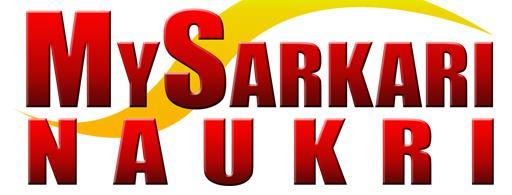In this article, we will delve into the syllabus for the Rajasthan Sanganak exam. The Rajasthan Sanganak (Computer) exam is conducted by the Rajasthan Subordinate and Ministerial Services Selection Board (RSMSSB) to select candidates for various computer-related positions in the state government departments. It is essential for aspirants to have a clear understanding of the syllabus to prepare effectively for the exam. Let’s explore the different sections and topics covered in the Rajasthan Sanganak syllabus.
Contents
Rajasthan Sanganak (Computor) Overview
| Recruitment Organization | Rajasthan Staff Selection Board (RSSB/ RSMSSB) |
| Post Name | Sanganak (Computor) |
| Advt No. | 5/2023 |
| Vacancies | 583 |
| Job Location | Rajasthan |
| Category | Syllabus |
| Official Website | rsmssb.rajasthan.gov.in |
Rajasthan Sanganak Exam Pattern
RSMSSB Computer Recruitment Exam consists of objective type multiple choice questions. There are 100 questions in the question paper of 100 marks. In this exam, 1/3rd of your marks will be deducted for wrongly answering any question.
| Parts | Subject | Total Marks |
| Part – A | General Knowledge | 30 |
| Part – B | Statistics, Economics and Mathematics | 70 |
| Total | 100 Marks | |
- There will be 100 multiple-choice (objective type) questions of equal marks.
- There will be negative markings, and 1/3 marks will be deducted for each wrong answer.
- The minimum qualifying marks will be 40% of the total marks of the exam.
- The standard of the paper will be of Bachelor’s degree level.
- The candidate will be given 120 minutes to solve the question paper.
RSMSSB Sanganak Syllabus
Those who are planning to give the RSMSSB Computer Recruitment Exam must first be familiar with the syllabus of the exam. Students can review Rajasthan Computer Operator Recruitment Exam Syllabus for more details.
Paper 1: General Knowledge
History, Culture and Heritage of Rajasthan: History of Rajasthan, Folk Literature, Folk Drama, Folk Art, Folk Music and Dance, Well Known Historical and Cultural Places of Rajasthan, Heritage Conservation, Major Tourist Destinations, Festivals and Fairs, Saints belonging to Rajasthan, Hawelies and Temples, Famous Forts, Customs, Jewelry, etc.
Current Affairs of Rajasthan and India: Development in the field of communication and information technology.
Natural Resources, Geography, Socio-Economic Development of Rajasthan: Natural Resources, Mineral Forests, Population in Rajasthan, Livestock, Vegetation and Soil, Environmental Conservation, Wildlife Conservation, Physiographic Divisions of Rajasthan, Water Conservation, Major Irrigation Projects, Resources of Power, Development Programmes and Schemes of the Government of Rajasthan, Handicrafts, Livestock, etc.
Paper 2: Statistics, Economics, and Mathematics
- Time Series Analysis: Measurements of Trend, Seasonal, Cyclical and Irregular Variations, Components
- Correlation and Regression: Correlation, Linear Regression and Coefficients
- Vital Statistics: Collection of Vital Statistics, Measures of Mortality Rates and Fertility Rates, Increase in Population
- Designs of Sample Survey: Sampling Frame, Simple Random Sampling, Cluster Sampling, Population Parameter, Sample Estimator, Stratified Random Sampling, Sampling Unit, Systematic Sampling, Sampling Fraction, etc.
- Economic Concepts: Concept of Elasticity, Economic Growth and Planning, Demand Forecasting, Inflation, Price Determination under different markets, Banking and Finance, National Income, Money, Law of Demand and Supply, Economic Growth and Planning, Inflation
- Index Number: Base Shitting, Cost of Living Index Numbers, Simple and Weighted Aggregate Method, Construction of Index Numbers, Uses and Limitations of Index Numbers, Chain Base Index Numbers, Simple and Weighted Average Price-Relatives.
- Basics of Computer: MS Excel, PowerPoint Presentation, MS Word, Basic Knowledge of Internet
- Economy of Rajasthan: Unemployment, Human Development, Public Finance, State Income, Agriculture, Industry, Livestock, Poverty, Infrastructure Development
- Elementary Mathematics: Rates and Ratios, Simple and Compound Interest, Decimal Fraction, Square Roots, Averages, Percentages
- Statistical System and Statistical Organization in Rajasthan and India: Niti Ayog, Registrar General of India and Rajasthan, Directorate Economics and Statistics, Reserve Bank Of India, Central Statistical Office, System of National Accounting, Ministry of Statistics and Programme Implementation.
Rajasthan Sanganak Syllabus Important Links
| Rajasthan Sanganak Syllabus | Download |
| RSMSSB Sanganak Syllabus Official Website | RSMSSB |
| RSMSSB Computer Recruitment | Recruitment |
RSMSSB Sanganak Syllabus FAQs
No, there are no negative markings for incorrect answers in the Rajasthan Sanganak exam. It is advisable to attempt all the questions and avoid leaving any questions unanswered.
Yes, practical knowledge is crucial for the Rajasthan Sanganak exam. The practical section tests the candidates’ ability to apply theoretical concepts to real-world scenarios.
No particular age limit has been set by the Rajasthan Subordinate and Ministerial Services Selection Board on the number of times candidates can apply for the RSMSSB Sanganak Post. They can appear as many times as they want until they meet all of the other eligibility requirements. Candidates may apply for the position until they reach the maximum age limit.
Yes, you can use any programming language like C, C++, Java, or Python for the programming section. However, it is recommended to choose a language that you are comfortable with and have proficiency in.
